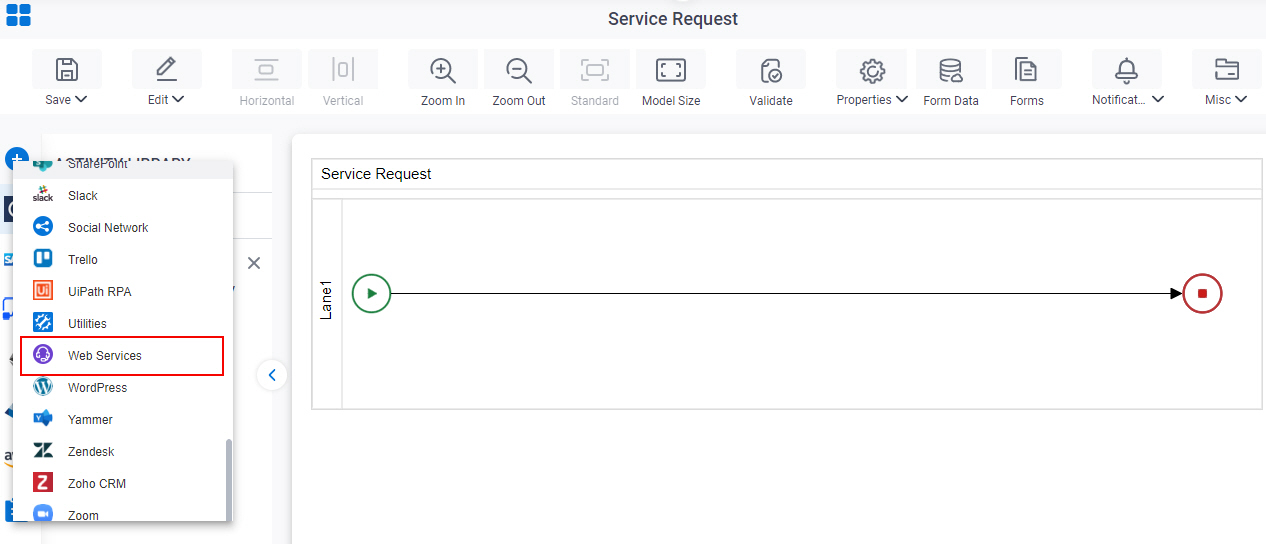.NET Proxy activity
An activity that uses a .NET proxy to call a web service method from a process.

Configure the .NET Proxy activity
To configure the .NET Proxy activity, do the procedure in this topic.
Prerequisites
- A valid web service — for example a live, valid WSDL file.
- AgilePoint NX OnPremises or AgilePoint NX PrivateCloud.
- On your AgilePoint Server machine, enter the .NET proxy assemblies in the file (AgilePoint Server instance installation folder) C:\Program Files\AgilePoint\AgilePointServerInstance\ConfigurationSettings\DotnetProxyAssemblies\DotnetProxyAssemblyList.xml
- The .NET proxy .dll or .exe assembly files must be in the GAC on the AgilePoint Server machine.
Good to Know
- In some cases, the type of the object instance returned by a web method may need to implement the IConvertible interface in order for the web method to be used with the Web Service activity.
- In most text fields, you can use process data variables as an alternative to literal data values.
- You can configure whether this activity waits for other activities before it runs.
For more information, refer to How Do I Configure an Activity to Wait for Other Incoming Activities?
- This section shows the configuration settings on the configuration screens for this activity. Other configuration settings apply to system activities. For more information, refer to:
How to Start
- Open Process Builder.
For information about how to open this screen, refer to Process Builder.
- Do one of these:
Procedure
- Complete the fields on the General Configuration screen.
- Click .NET Configuration
 .
. - Complete the fields on the
.NET Configuration screen.
For more information, refer to Call a Web Service Method from a .NET Proxy.
- (Optional) Click Advanced
 >
Email Notifications
>
Email Notifications  .
.
For more information, refer to Email Notifications screen (Process Activities).
General Configuration
Specifies the basic settings for the .NET Proxy activity.

Good to Know
- Documentation for this screen is provided for completeness. The fields are mostly self-explanatory.
Fields
| Field Name | Definition |
|---|---|
|
Display Name |
|
|
Description |
|
.NET Proxy Configuration
Specifies the web service method to call when the activity starts.

Fields
| Field Name | Definition |
|---|---|
|
.NET Proxy Access Token |
|
|
Create |
|
|
Class Name |
|
|
Method Name |
|
|
Runtime URL |
|
|
Request Mapping |
|
|
Map Response to AgilePoint Schema |
|
|
Store the Response in Custom Attribute |
|





